What's New
Displaying results 3761 - 3770 of 4922

Resource | Publications,
This Global Plan provides the foundation for country-led movement towards the elimination of new HIV infections among children and keeping their mothers alive.
It is possible to stop new HIV infections among children and keep their mothers alive if pregnant women living with HIV and their children have timely access to quality life-saving antiretroviral drugs—for their own health, as indicated, or as a prophylaxis to stop HIV transmission during pregnancy, delivery and breastfeeding. When antiretroviral drugs are available as prophylaxis, HIV transmission can be reduced to less than 5%. Preventing HIV infection among women at increased risk of HIV and meeting unmet family planning needs of women living with HIV can significantly contribute to reducing the need for antiretroviral prophylaxis and treatment.
There is global consensus that the world must strive towards elimination of new HIV infections among children by 2015 and keep mothers and children living with HIV alive. Many low-and middle-income countries have already moved significantly towards achieving these goals.
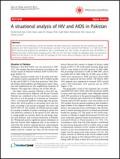
Resource | Publications,
HIV (Human immunodeficiency virus) transmission has been reduced by protected sex and screening of blood products and other body fluids in the developed countries. It has been reported that Pakistan is at high risk of HIV/AIDS infection but presently the prevalence rate is considerably low. The number of reported cases of HIV/AIDS in Pakistan has been continuously increasing since 1987. By 2010 the total number of registered cases has reached to 6000 and this figure is on the rise with the passage of time. Some serious strategies must be implemented to control this deadly disease.
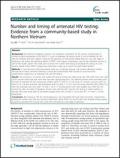
Resource | Publications,
HIV testing for pregnant women is an important component for the success of prevention of mother-to-child transmission of HIV (PMTCT). A lack of antenatal HIV testing results in loss of benefits for HIV-infected mothers and their children. However, the provision of unnecessary repeat tests at a very late stage of pregnancy will reduce the beneficial effects of PMTCT and impose unnecessary costs for the individual woman as well as the health system. This study aims to assess the number and timing of antenatal HIV testing in a low-income setting where PMTCT programmes have been scaled up to reach first level health facilities.
A cross-sectional community-based study was conducted among 1108 recently delivered mothers through face-to-face interviews following a structured questionnaire that focused on socio-economic characteristics, experiences of antenatal care and HIV testing.
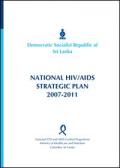
Resource | Publications,
HIV infection was first detected in Sri Lanka in 1987 and it will continue to be with us for many decades to come. The estimated number of people living with HIV as at the end of 2007 is around 3500-4000. Hence, Sri Lanka is considered a country with a low prevalence of HIV infection. However, a gradual increase in new cases is being observed and the feminization of the epidemic is emerging. The presence of certain socio-demographic and behavioural factors may change the present HIV landscape.
Based on the above factors and the recommendations of the external review carried out to assess the national response against HIV during the five year period ended in 2006, a new strategic plan for 2007 – 2011 was formulated. This was completed with a wider participation of stakeholders from government, non-governmental organizations, business community, religious leaders and people living with HIV. This plan has identified main strategies based on a set of principles and has identified programme priorities, and areas in which various sectors need to focus future actions. Monitoring and evaluation will be based on the indicator frame work.

Resource | Publications,
This report reviews progress made until the end of 2010 in scaling up access to health sector interventions for HIV prevention, treatment, care, and support in low–and middle-income countries. It is the fifth in a series of annual progress reports published since 2006 by the World Health Organization (WHO), United Nations Children’s Fund (UNICEF), and Joint United Nations Programme on HIV/ AIDS (UNAIDS), in collaboration with national and international partners, to monitor key components of the health sector response to the HIV epidemic.
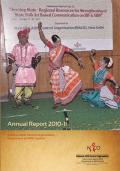
Resource | Publications,
The recent HIV estimations highlight an overall reduction in adult HIV prevalence as well as new infections (HIV incidence) in the country, although variations exist across the states. The analysis of epidemic projections has revealed that the number of annual new HIV infections has declined by more than 50 percent during the last decade.
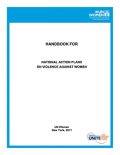
Resource | Publications,
This Handbook is based on the results of an expert group meeting on good practices in national action plans on violence against women. The meeting was convened by the United Nations Entity for Gender Equality and Empowerment of Women, UN-Women, in cooperation with the United Nations Economic Commission for Latin America and the Caribbean Subregional Headquarters for the Caribbean, Port-of-Spain, Trinidad and Tobago, in September 2010.
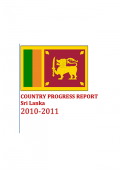
Resource | Publications,
Currently Sri Lanka is experiencing a low level HIV epidemic. The estimated number of people living with HIV as at end 2009 was 3000 and the estimated HIV prevalence among adults (15-49 years) is less than 0.1%. Survey data observes that even among individuals considered at higher risk of infection on the basis of their occupation, behaviors and practices, the HIV prevalence is below 1%. As at end December 2011, a cumulative total of 1463 HIV persons were reported to the NSACP. The main mode of transmission is due to unprotected sex between men and women (82.8%)

Resource | Publications,
Gains continue to be made in the response to the global HIV epidemic. New HIV infections are falling, fewer people are dying of AIDS-related causes and more people with HIV are living longer.
There were 2.7 million [2.4 million–2.9 million] new HIV infections in 2010, down 21% from the peak of the global epidemic in 1997. HIV incidence has fallen in 33 countries, 22 of them in sub-Saharan Africa, the region most affected by the AIDS epidemic.
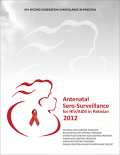
Resource | Publications,
The HIV pandemic is one of the greatest challenges that the world faces today. At the end of 2012, 34 million people were estimated to be living with the virus. There were 390,000 new infections among children under the age of 15. Most of these new infections are believed to stem from transmission in utero, during delivery (vertical transmission) or as a result of breast feeding.





